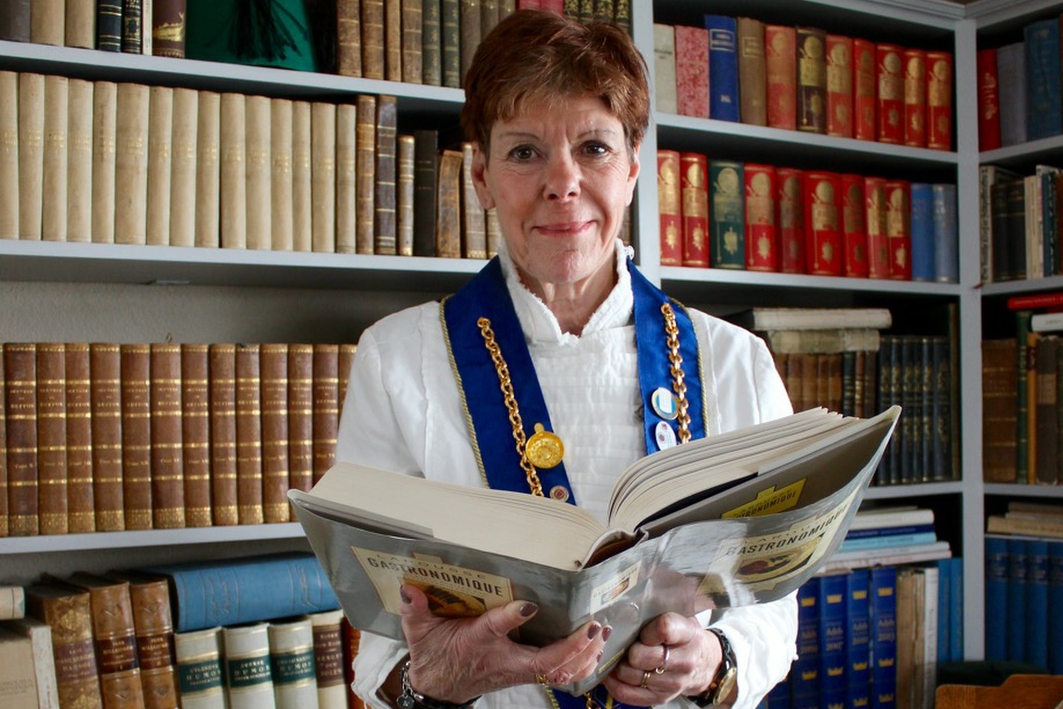
An exclusive interview draws on her great experience
" Learn the craft, there are no shortcuts! "
A Chaîne member for almost 10 years, given her great experience in the catering industry and her commitment to developing young talent through competition participation, it was perfectly natural that Catarina Offe became Conseiller Culinaire of the Bailliage in Sweden in 2011.
Here, in an exclusive interview with the Chaîne News On-line, she gives us the benefit of this experience.
From where does your love of gastronomy come?
For me working with food was not a given ... I wanted to be a vet. Good at cooking classic food, my mother was also interested in new dishes and products which was unusual back then. I took good food for granted because it was always there.
In High School realising science subjects were too difficult my dream to work with animals was shattered. My mother suggested I should work as a chef in official catering like my cousin. After my first practical training I said I’d never ever walk into a catering establishment again! I had had to cut 10 kilos of pork belly with thick rind into small cubes and was told off for cutting too much fat away.
After working as a supervisor in hospitals, schools, military kitchens even a prison, being young with lots of energy my challenge came working with Sodexo in the private sector. I successfully developed management skills becoming a Regional Manager, then Business Area Manager and subsequently a Marketing Manager.
Finally a sought-after job as a product developer presented itself. My team of five creative employees developed concepts and food festivals highlighting cuisine from other countries. We imported all kinds of exciting products.
Learning about food while working was a pleasure. Through the company’s sponsorship of the Swedish Culinary Team I got to know the best chefs in Sweden and engaged them in different projects and events.
Now I am a real foodie! At home, my husband, a German chef, cooks classic kind of food while I introduce new recipes.
What would you say have been the biggest developments in gastronomy that you have witnessed?
Back to basics. Exclusive and different primary products, new taste combinations, creative presentations are unfashionable. In Sweden we have always been interested in international cuisine. Foreign flavours have been tasted with some being retained, however the trend now is to go back to where we started.
Long-forgotten, old-style Swedish home cooking is what everybody talks about now. Our Swedish Culinary Team has presented our products on the international stage several times and won!! Swedish food should of course be cooked with Swedish products. Ingredients are re-introduced with “from nose to tail” now on the menu.
What do you think are the most significant trends and perhaps challenges faced by gastronomy today?
To continue using carefully chosen products. Sourcing the best quality meat is essential when using “from nose to tail”. Only buying animals from farmers or countries where we are sure of the quality of livestock farming. Only using certified and sustainable seafood. This takes courage!
The demand of ecological and locally produced food is greater today than the supply, even though our best chefs are supporting small farmers who then have regular customers.
What do you think today’s chefs should be doing to keep moving gastronomy to a new level?
Not being a chef yet a great admirer of their craft and creativity, you never know exactly what they are up to. To keep gastronomy at today’s high level is a challenge. Cooking culinary delicacies from leftovers tests creativity. Chefs seem to have their own secret pantry. Suddenly we use birch oil and other products we didn’t even know existed.
The latest Nobel dinner, where one of our professional members was the gastronomic adviser, presented a splendid example of the ultimate trend in cooking. No luxury produce was used except our own “caviar” (whitefish roe). Potatoes, root vegetables and onions in new variations with even the membrane between the onion rings used as art in the appetizer, now called the “onionghost”. Herb leaves were used in the first course, the stems in the main course. Taste and smells like smoke, ashes, soot and reindeer moss, straight from the forest, decorated the main course.
Today many great chefs are good hunters so they can serve fresh meat albeit a limited amount. Our chefs are important consumer educators. What our best chefs serve the rest tends to copy.
What advice would you give to young and aspiring chefs?
Be humble and curious.
Learn the craft. There are no shortcuts. An exclusive red wine will not make good gravy if you do not know the basics.
Learn to work with recipes not improvise. Guests expect the taste to be the same every time not depending on whether Kalle or Anna is cooking.
Learn variations, be quick thinking, have a plan B.
In evaluations from the Jeunes Chefs Rôtisseurs Competition questions about technical equipment always from the youngest chefs are foremost.
Techniques will never solve cooking challenges. Older chefs find solutions in situations.
Young chefs are of course on their way up and must not forget why. A skilled chef, who was a bit tired of the egocentric young chefs in his kitchen, once said: “They are supposed to realise the dream of the guest and not themselves”. If the guest is pleased his/her dream will come through.
Finally a high degree of social skill is essential. Being over-confident is not the solution!
With much appreciation to Margareta Henry, Chargée de Missions Honoraire, for her help with preparing the initial English version
Hotel Adler Asperg: 127 years in the same family